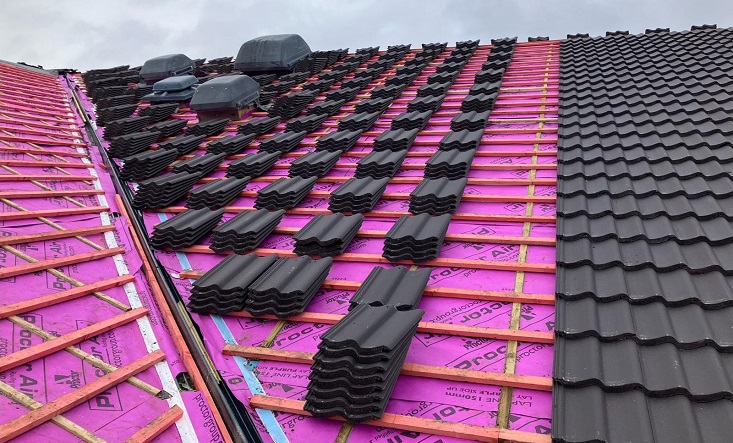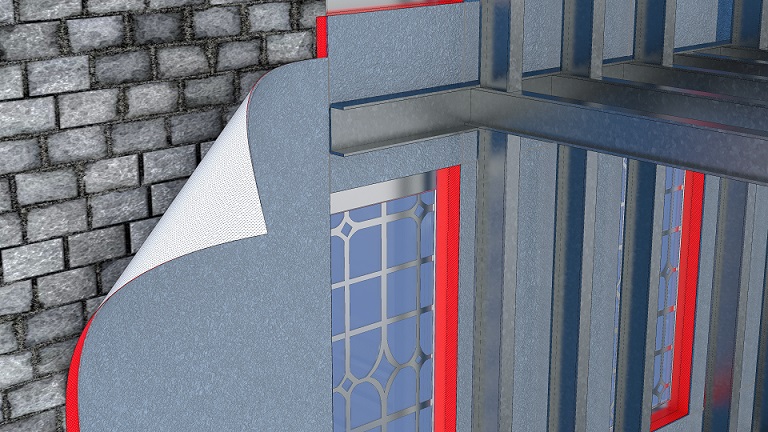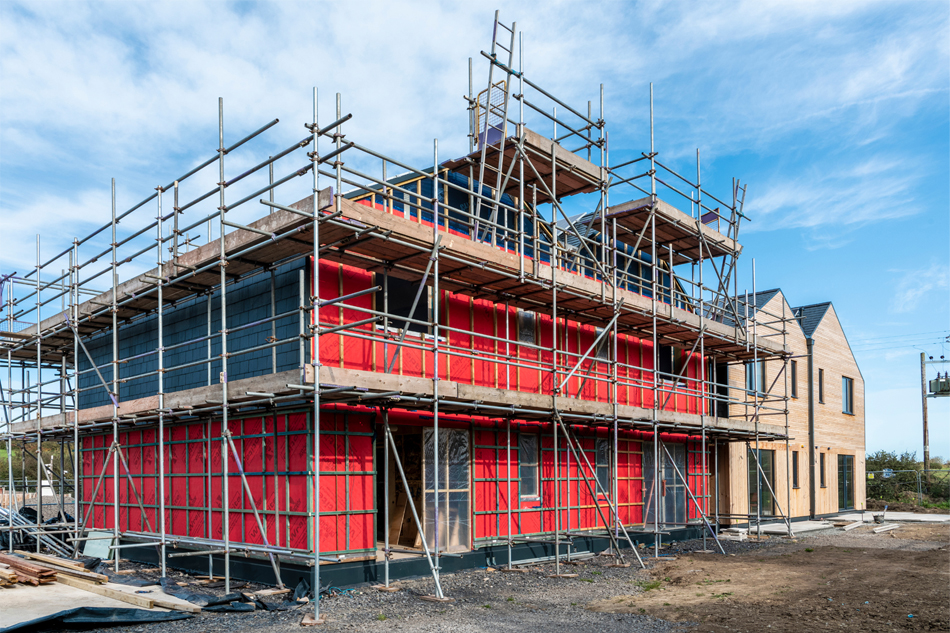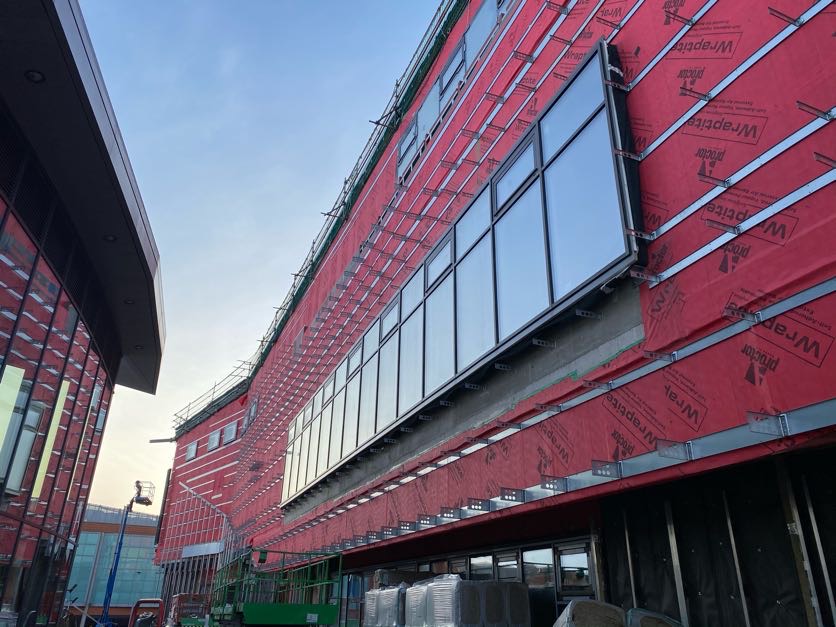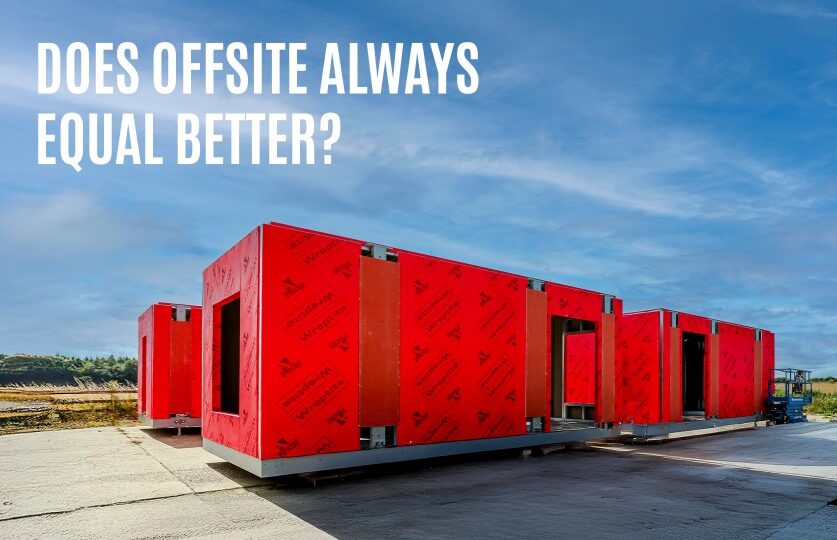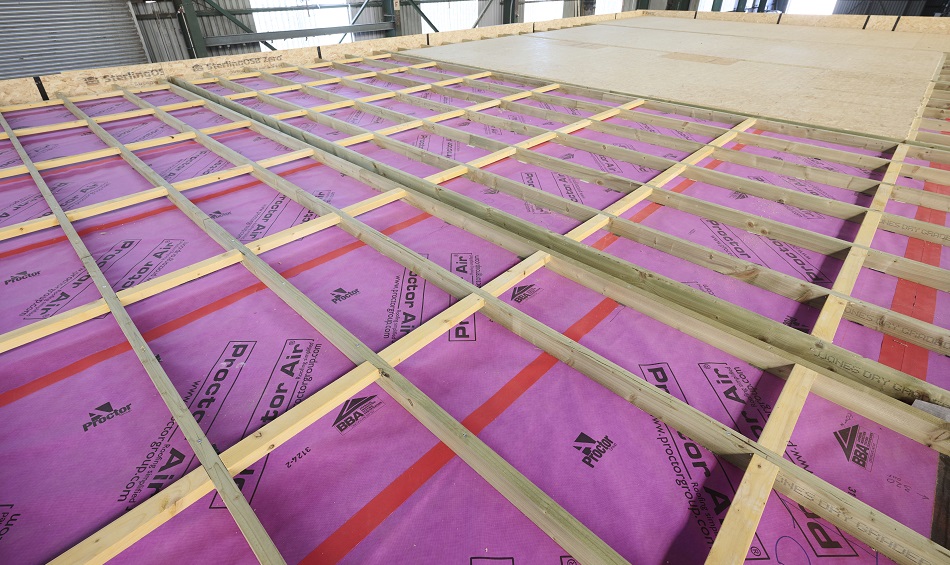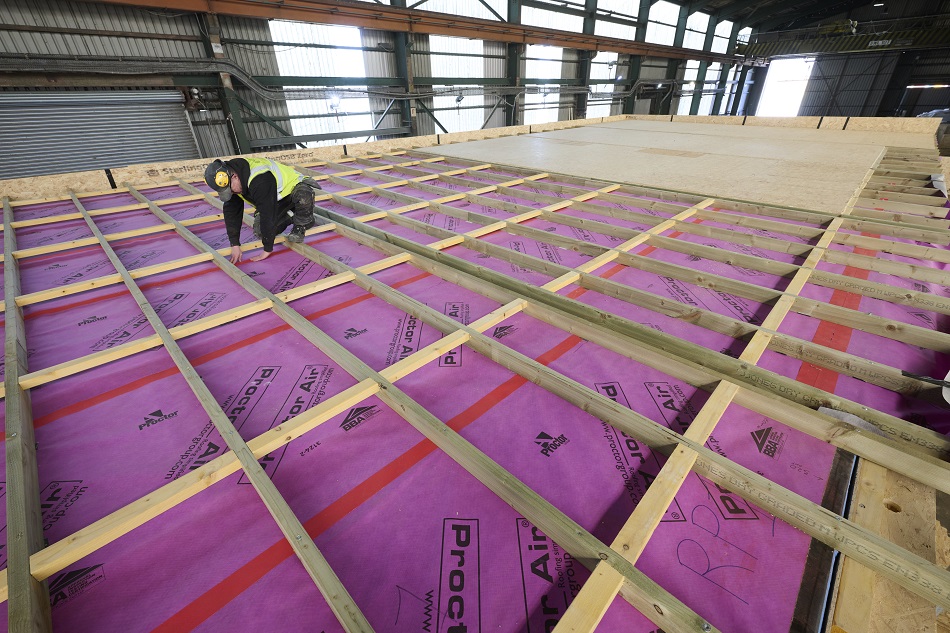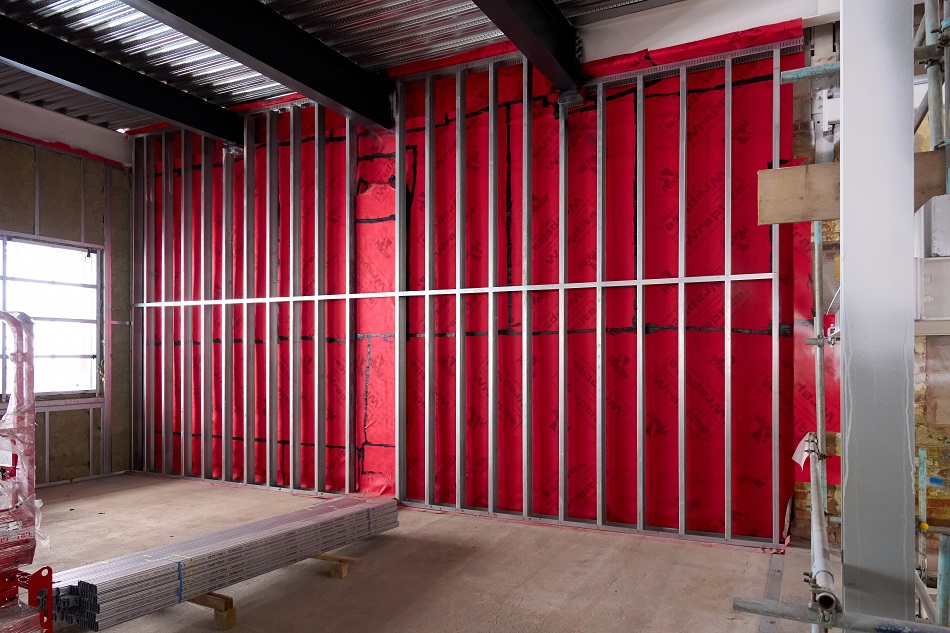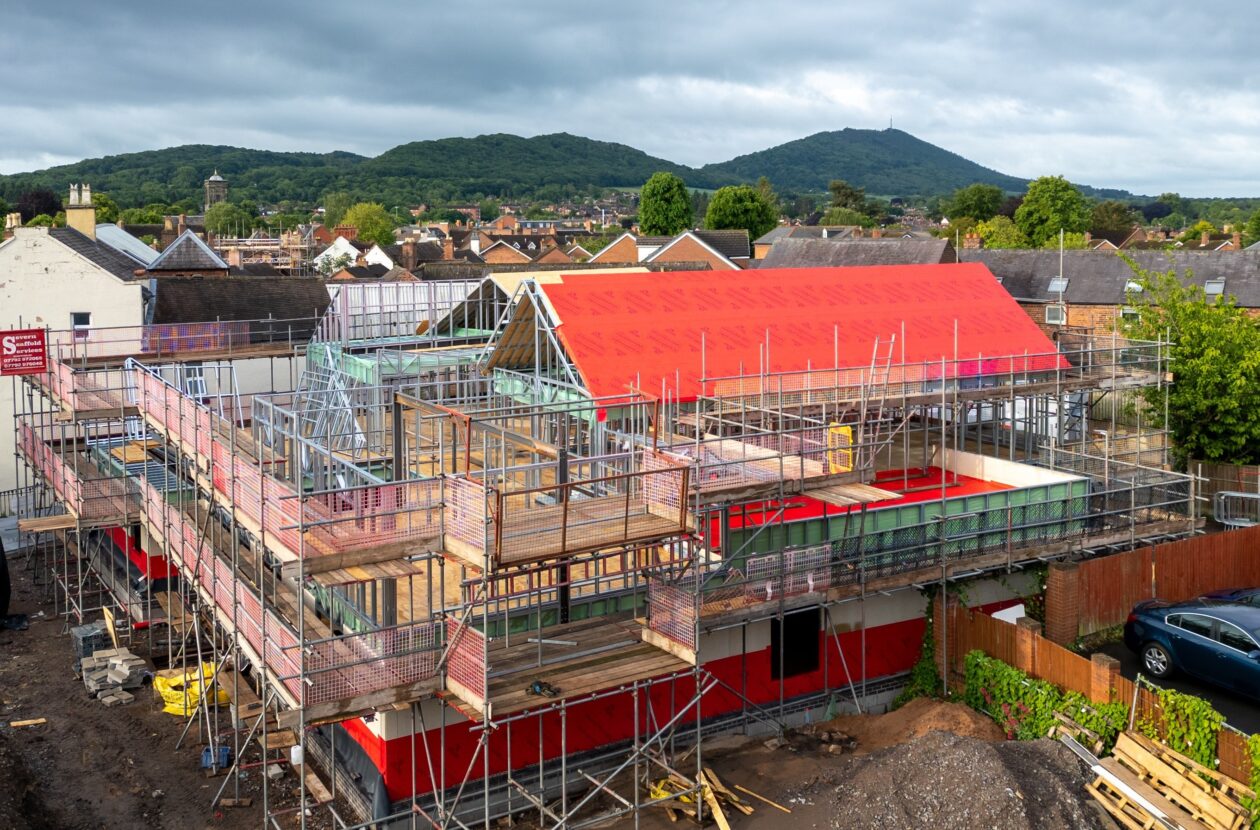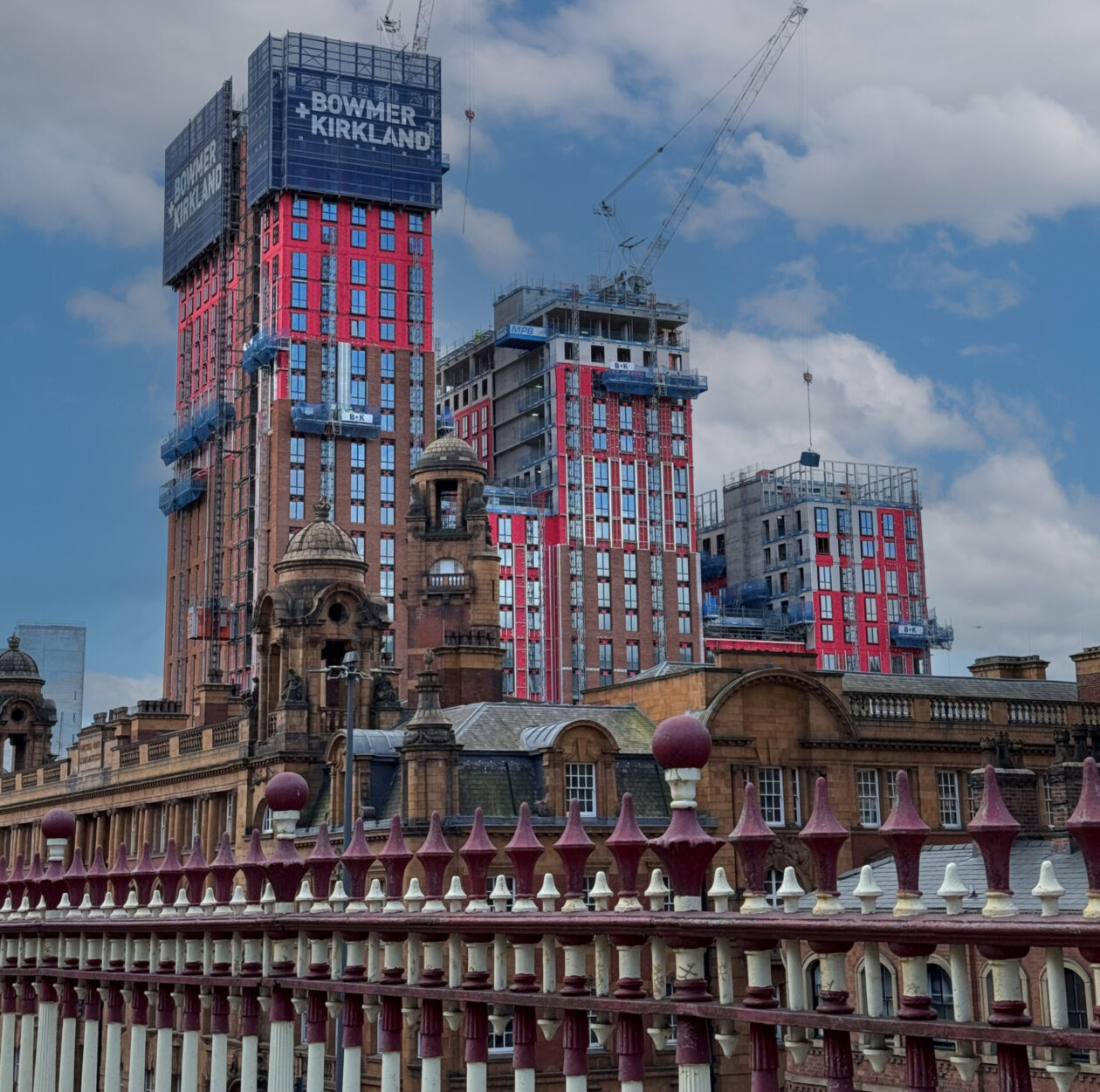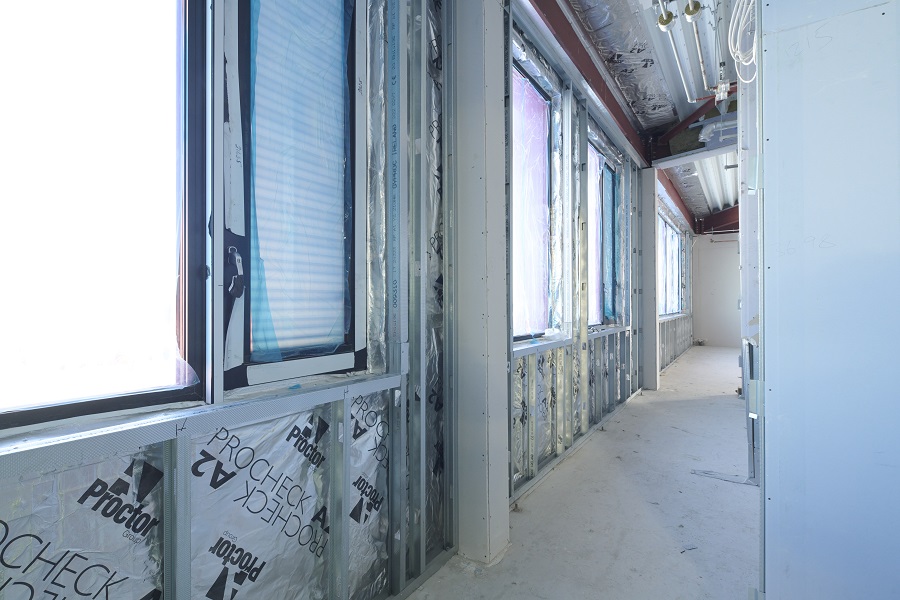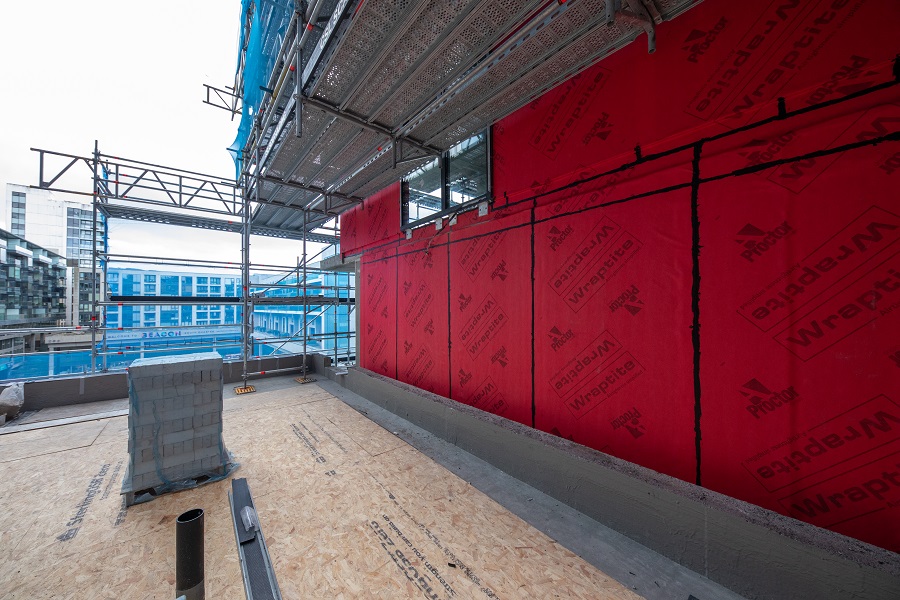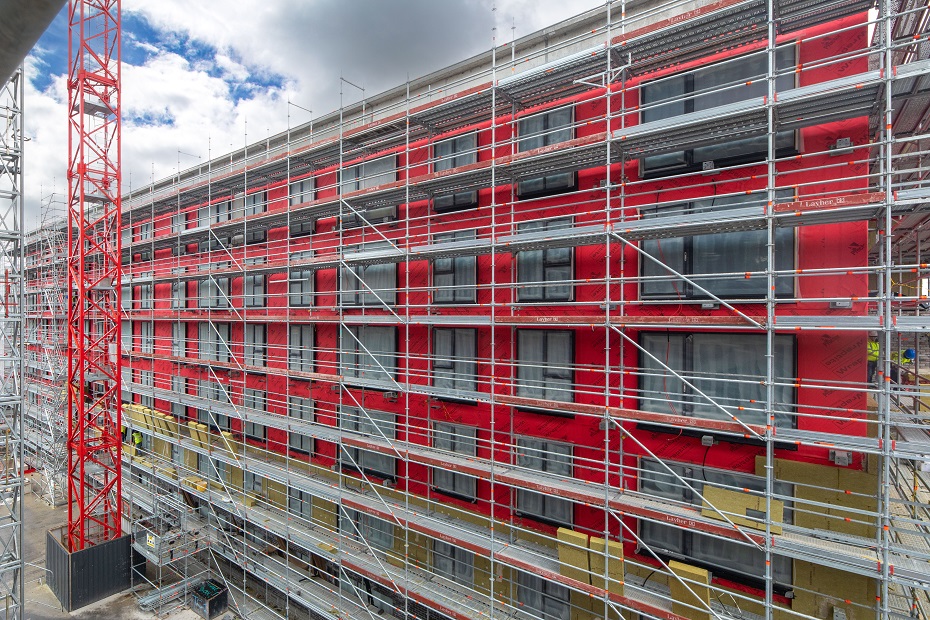How important is the substrate condition?
Wraptite should be installed onto a substrate that is as clean and dry as is reasonably practicable on site. It should also be smooth, and free from anything that might puncture the membrane. One common question that is raised about this is whether the membrane can be installed if there is moisture stored in the substrate, for example in an OSB sheathing board or CLT structure. The answer to this is that Wraptite can be installed in these conditions, as long as the surface is dry to the touch. Many materials, and especially ones like timber, always have an inherent water content, so it is impossible for these to be fully dry. Additionally, Wraptite is vapour permeable, and so will allow the substrate to lose excess moisture. Any gaps, joints or cracks in the substrate that are wider than 6mm should be filled in, using a bead of our Wraptite Liquid Flashing.
Installing the membrane can be done in either horizontal or vertical runs. The method chosen should be based on the building itself such that openings present minimal interruptions. Installing vertically is easier for a single person, while horizontal applications should be done by multiple people. To install it, the membrane is aligned on the substrate and cut to the desired length. The release liner is peeled off as the membrane is applied to the wall, and pressure is simultaneously applied to ensure good adhesion.
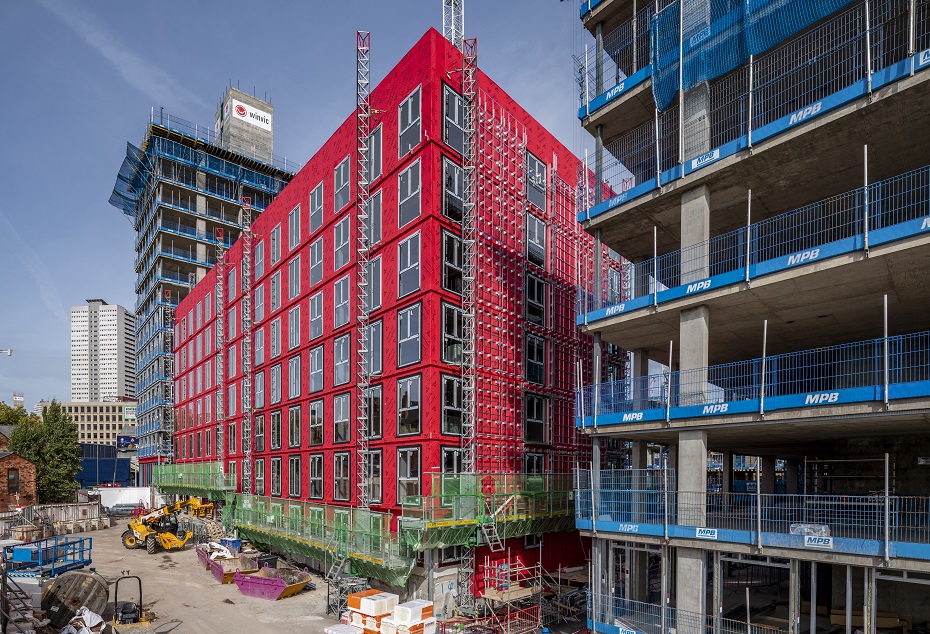
- Firm pressure from a hand roller should remove any bubbles or creases, ensuring airtightness by adhering the membrane well to the substrate. Laps of the membrane should be shingled to ensure that water sheds off it correctly, rather than being able to infiltrate into the lap.
- Corners and other apertures in the façade need to be treated to ensure that they are not points of air leakage. Our Wraptite Corners assist with these difficult junctions, allowing a simplified approach to airtightness. Made from the same material as the membrane itself, these are inserted into window reveals to ensure that the corner is not a point of air leakage. The Wraptite membrane is then lapped into the reveal over them, providing a robust seal.
- Unlike mechanically fixed membranes, Wraptite does not require tapes over the laps to make it airtight. The membrane will adhere to itself to form that seal, simplifying construction. Tapes are only required for going around details or penetrations; or for making repairs to the membrane. These can be supplied in a range of widths as required. It is also available as a split release liner, which is useful in connecting modular constructions, and other applications where it is beneficial to apply one side of the tape at one time, and the other half at a later date.
We also supply our Wraptite Liquid Flashing, which provides another option for detailing with Wraptite. It is applied around larger penetrations or used to protect exposed leading edges of the membrane where water ingress might occur.
Tools Required for Wraptite Installation
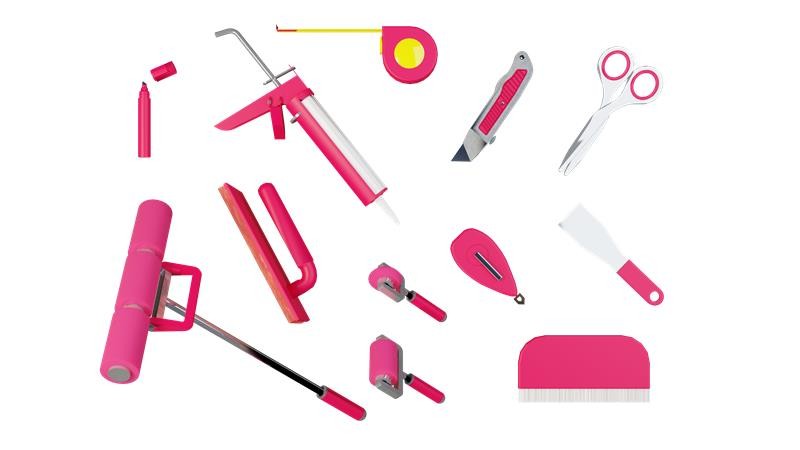
- Utility Knife
- Hand-Held Heavy Duty Roller
- Stiff Brush
- Marker Pen
- Measuring Tape
- Scissors
- Putty Knife
- Foil Applicator Gun 600ml
- Clean Cloth
Request a Sample
Technical Advice
CAD Detail Review
U-Value Calculation
Book a CPD
Specification Check

